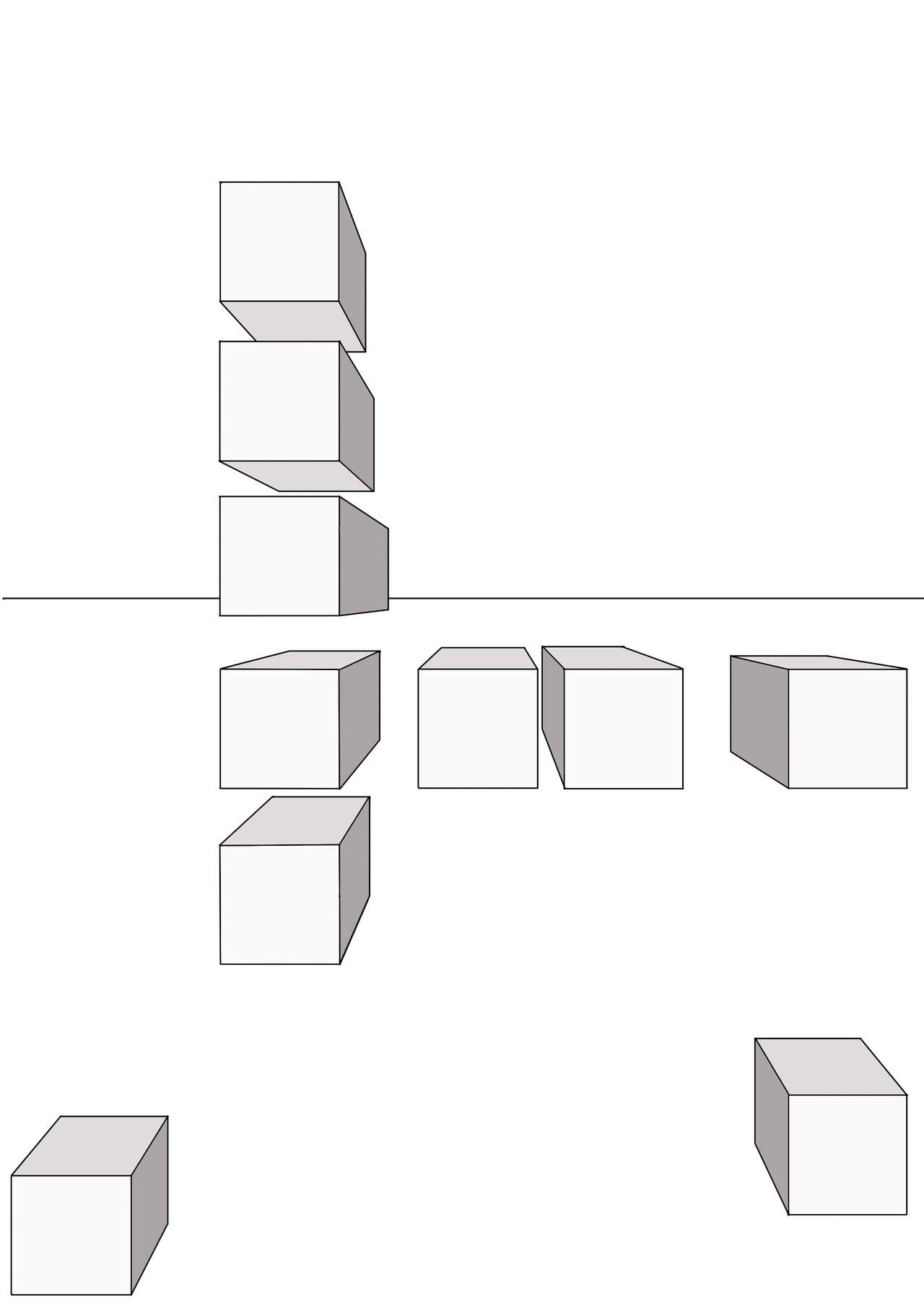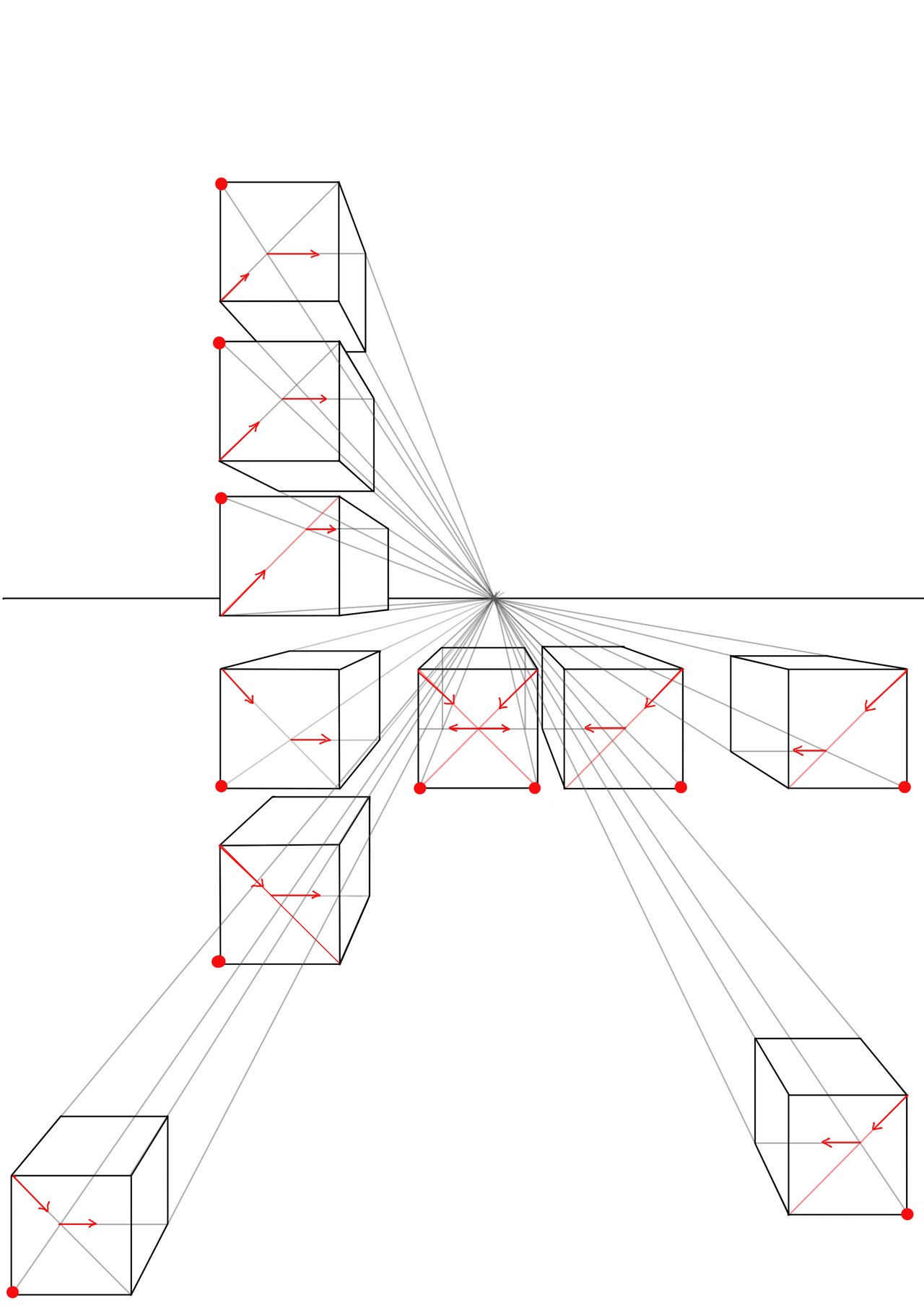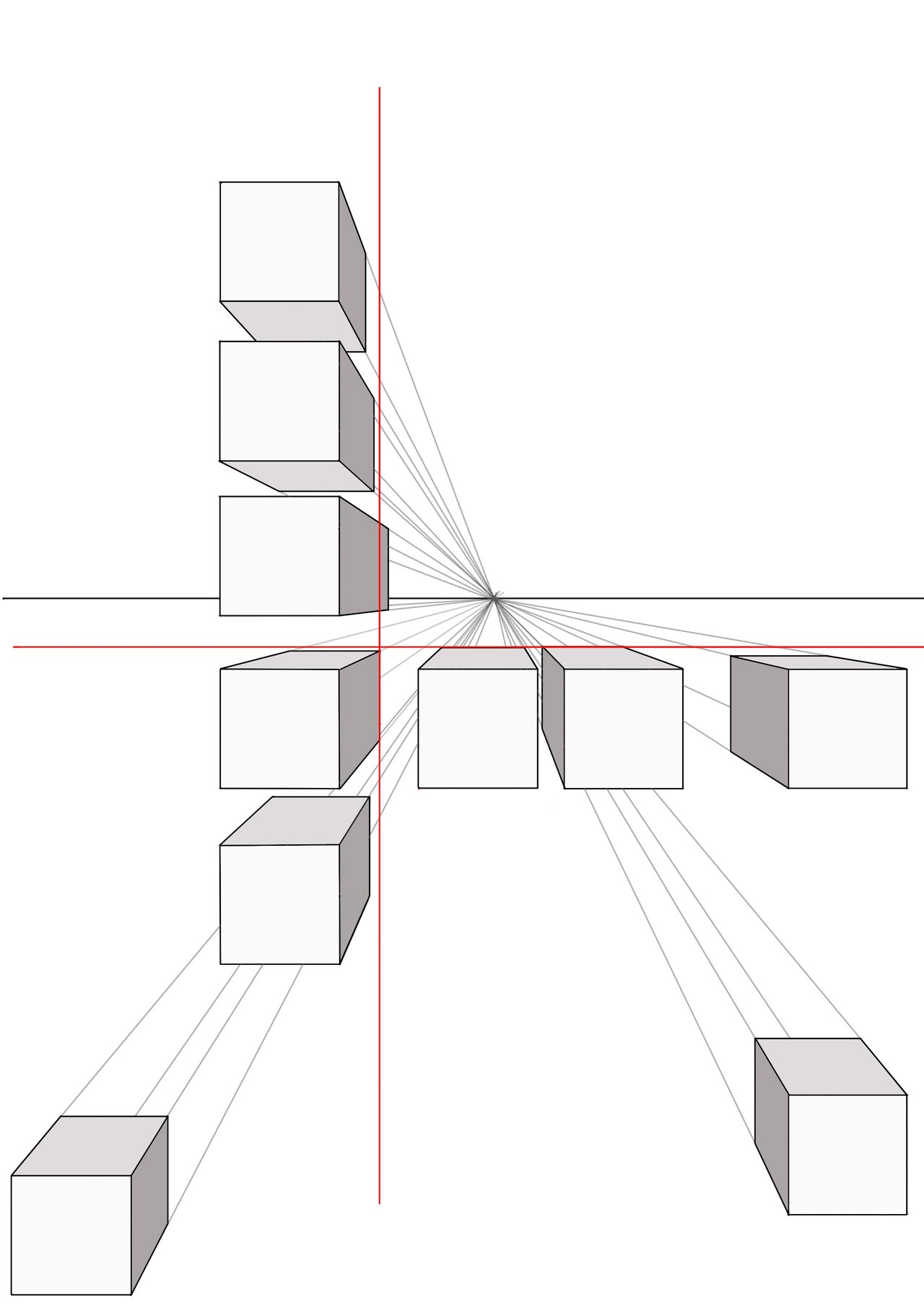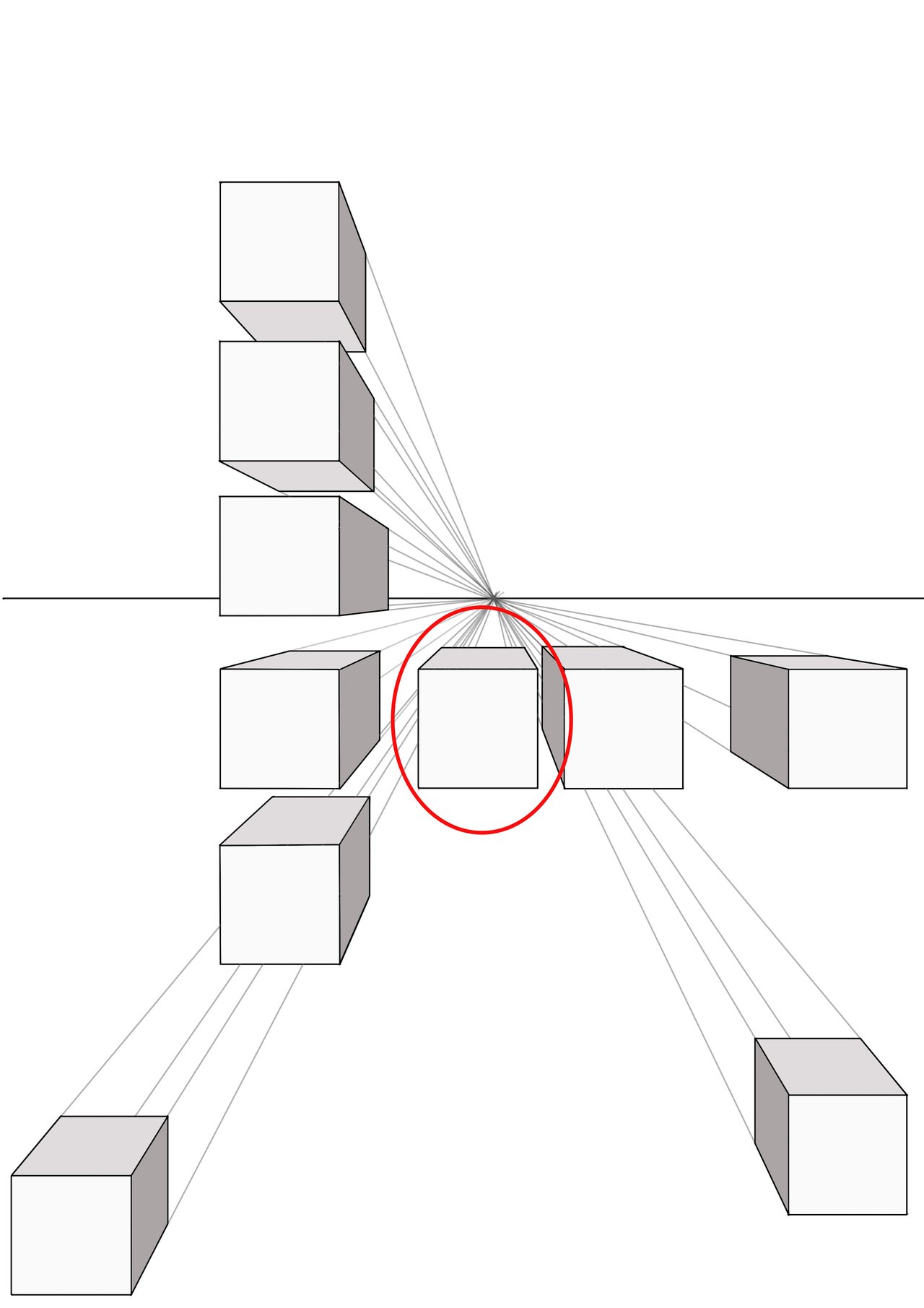
Hi friends!
We are going to make a cube in a one-point perspective (in the Lesson: Basic Shapes, 2 we draw a cube in a two-point perspective) by placing a horizon line and then a square in a random place, around the middle of the drawing page.

Drawing the vanishing lines towards the horizon line we define the vanishing point VP.
As you can see, the square drawn is AB on the horizontal side and AB' on the vertical side, (AB equals AB').
Using the method of diagonals we can determine the depth of this square: by establishing the edge AB as the base of the cube and the edge AB' as the reference to determine the depth. We draw an imaginary vanishing line from A to B, setting B as the auxiliary vanishing point, and then we draw the diagonal B'B which is in fact the second vanishing line to the auxiliary VP. The intersection of this diagonal (B'B) and the vanishing line from A (this is the furthest vanishing line in relation to the VP) gives us the depth to draw the cube.

This is the cube we have drawn in a one-point perspective.

Following the same method we can draw several cubes in different places.

I have marked the corner with a red dot and with the red arrow starting from the opposite vertical end, the two lines that intersect to determine the depth of the cube.

You will notice that the same square gives different depths depending on its position. This is due to the distortion caused by the distance between the VP and the object.
The further the object is from the VP that we have placed approximately in the centre of the drawing sheet, the greater its distortion.
You will see that the cubes that are more in the centre are the ones that best respond to the perception we have of a cube.

Finally, the object located in the most central part, almost in front of our point of view, is the one that most agrees with the real representation of a cube and is the one that we can use as a starting point to represent other objects in our scene.

Well, we can conclude from this study that the further away the objects are from the VP, the greater the distortion that occurs when representing it using perspective methods.
If you want a more accurate explanation we would have to enter the field of Optical Physics but that is not what interests us here.
The important thing is to understand well how objects are distorted as they move away from the viewer's visual field, understand it and always keep it in mind when drawing is crucial and the best way to study this is through the use of the cube or cuboid blocks, which is the fundamental figure that allows us to represent any other object.
I wish you a very nice day and good exercise!
@fumansiu/color-and-light-orange-round-3
is his newest lesson.
Very interesting indeed!
Well, our friend @arcoiris is back with his magnificent watercolour lessons.
Check out this last post that contains very interesting and useful advice about watercolours in different qualities and formats from different brands.
Also, thanks to @xpilar for making these initiatives possible with their great support.
Here are the links to the previous related posts.
1 - 2 - 3 - 4 -
5 - 6 - 7 - 8 - 9 - 10 -
11 - 12 - 13 14 - 15 -
16 - 17 - 18 - 19 - 20 - 21 - 22 - 23 - 24 - 25 -
26 - 27 - 28 - 29 - 30 - 31 - 32 - 33 - 34 - 35 - 36 - 37 - 38 - 39 -
40 - 41 - 42 - 43 - 44 - 45 - 46 - 47 - 48 - 49 - 50 - 51-feedback - 52-Masterclass - 53-Homework Contest #6 - 54-Lesson - 55-Lesson - 56-Lesson - 57-Lesson - 58-feedback - 59-feddback - 60 Masterclass - 61-HW Contest #7 - 62-Lesson - 63-Lesson - 64-Lesson - 65-Lesson - Lesson-66 - 67-feedback - 68-feedback - 69-feedback - 70-Masterclass - 71-Homework Contest #8 - 72-Lesson - 73-Lesson - 74-Lesson - 75-Lesson - 76-Masterclass - 77-Homework - 78-Lesson - 79- Lesson - 80-lesson - 81-feedback
Posted through the AVLE Dapp
Posted through the AVLE Dapp (https://avle.io)
